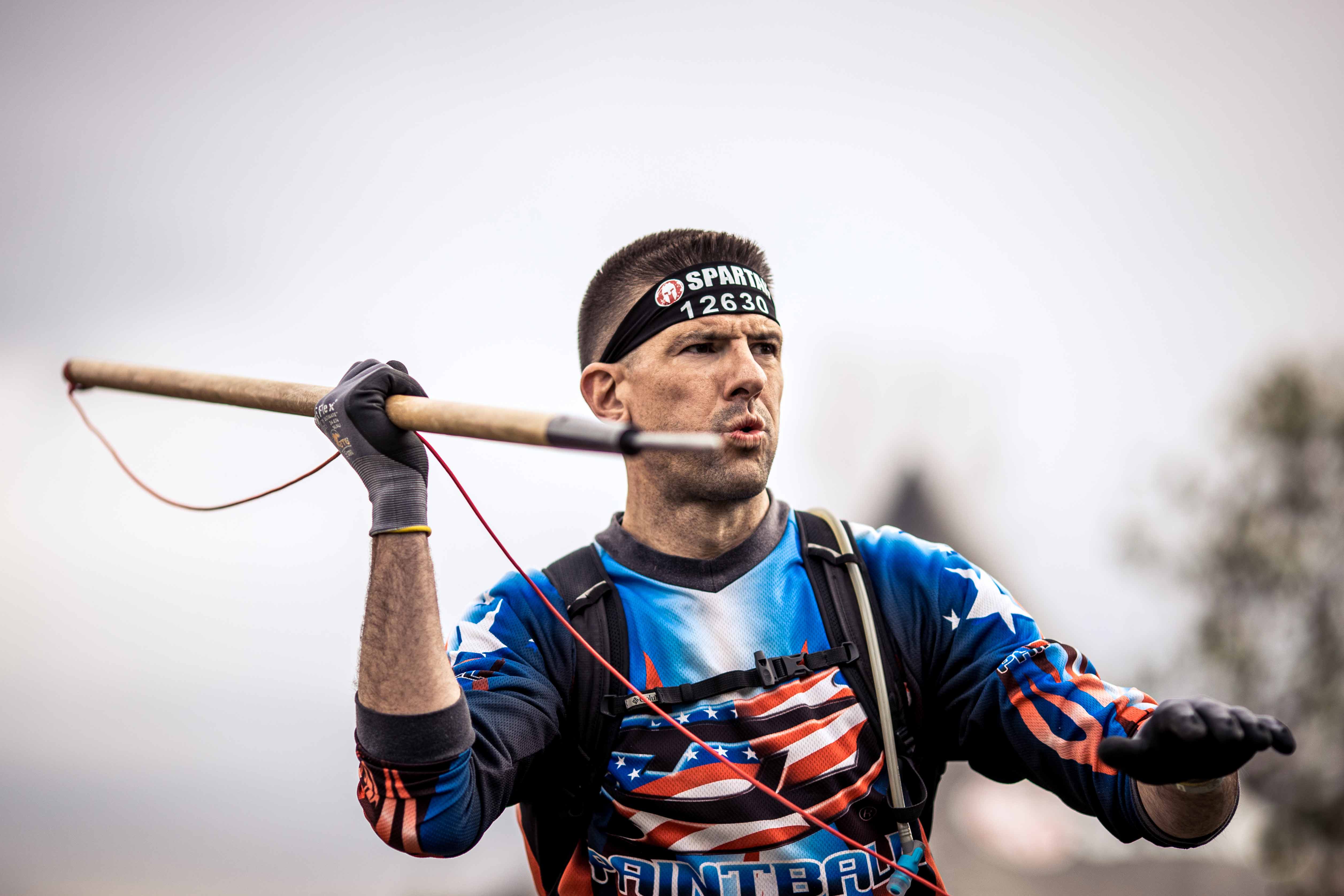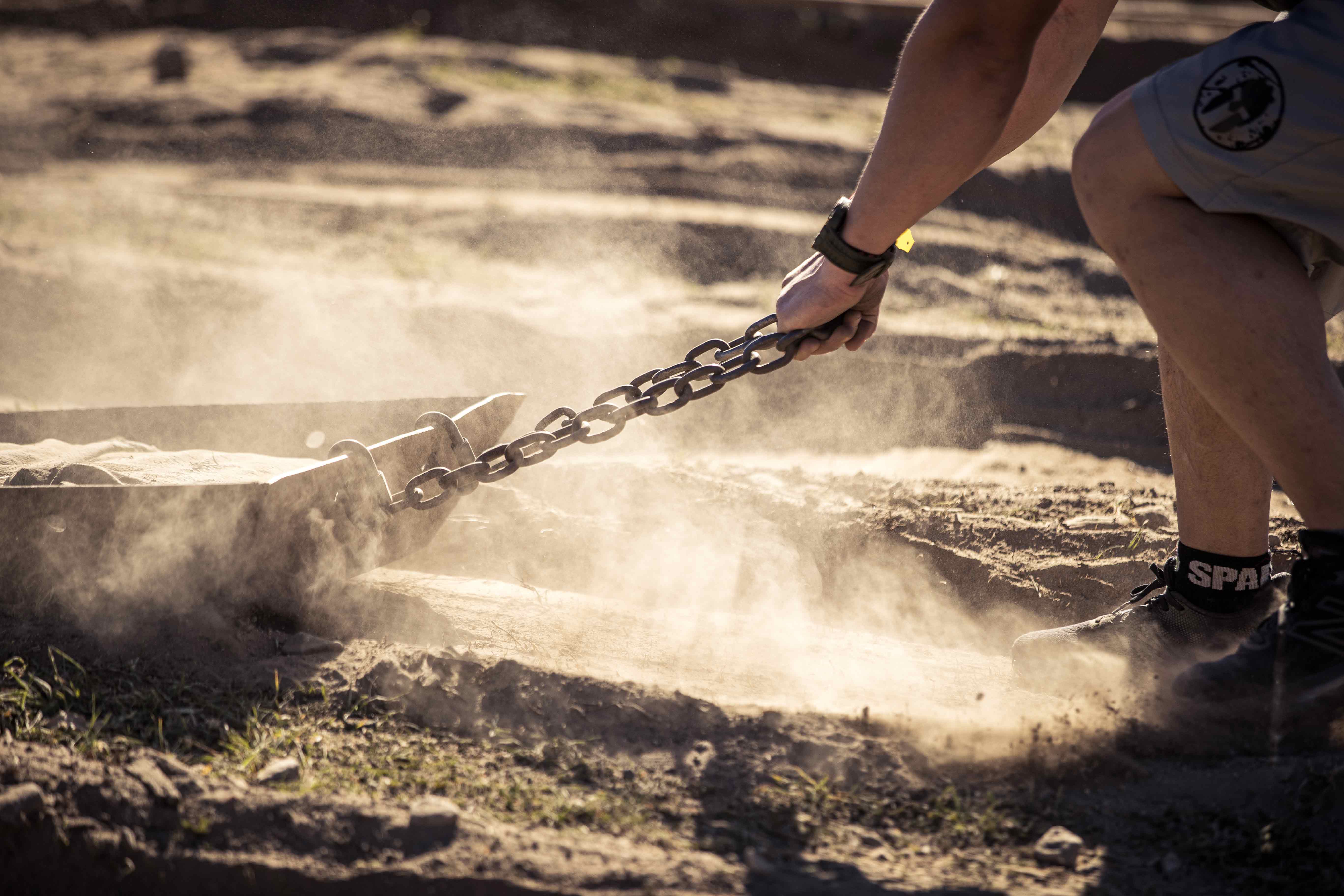Spartan races are not your average 10K or half-marathon. Each Spartan race distance (Sprint, Super, Beast, and Ultra) requires aerobic endurance, muscular endurance, anaerobic endurance, strength, agility, balance, muscular power, and mental willpower to succeed. As such, a typical 12-week Spartan SGX training program consists of three, 4-week phases: Function, Fitness, and Performance.
Related: These 3 Explosive Fitness Tests Will Expose Your Athletic Weaknesses
To track your progress and consistently assess your race readiness, doing your own fitness testing before starting a training program and after each phase is recommended. Try these five fitness tests (and repeat them every month) to ensure that you’re getting race ready.
Fitness Tests That Prepare You to Run a Spartan Race

Increasing Power
Power is force divided by time, and focuses on the ability to produce a large amount of energy in a short period of time. Examples of obstacles that require power are wall climbs, the Herculean Hoist, jumping, and sprinting.
Test 1: Wingate Test
According to a 2020 Human Movement study about predictors of obstacle course race (OCR) performance, success in the Wingate Test (a test of muscular power), had a significant correlation to improved finish times in a simulated 3-mile OCR. In fact, a 1 W/kg (Watts per kilogram) increase in mean relative Wingate power resulted in a 6.47-minute reduction in race time among the 32 participants. Wingate tests are typically only performed in science laboratories, but we’ll give you an at-home version, too.
How to Perform the Wingate Test
The laboratory version of the test is as follows:
- Set a cycle ergometer to 7.5% of your body weight in kilograms.
- Do a warm-up for 3-5 minutes, achieving a heart rate of 120-130 beats per minute (BPM).
- When you're ready for the test, start a 10-second timer. Pedal comfortably for 5 seconds, then begin to pedal harder for 4 seconds. At the 10th second, add weight.
- Cycle as hard as possible for 30 seconds.
The Human Movement study had an average Wingate mean power score of 8.08 W/kg for men and 6.55 W/kg for women. For reference, a Journal of Strength and Conditioning Research study of NCAA Division I athletes from the U.S. Air Force made rankings of Wingate performances. In that study, an 8.08 would be considered “average” for males and a 6.55 would be considered “below average” for women.
How to Perform the At-Home Version of the Wingate Test
- Set your indoor cycling bike to the highest resistance that it can reach.
- Do an all-out sprint for 60 seconds at 80-90% of your maximum heart rate.
- Rest for 1 minute. Do two more rounds. Record your time.
Test 2: Broad Jump
This test evaluates total body power and is indicative of innate athleticism. Knowing how far you can jump is important when running through terrain with fallen trees, leaping up the Slip Wall, and jumping over the Fire Jump, to name a few uses.
Related: These Are the 5 Most Important Exercises for Explosive Power
How to Perform a Broad Jump
- Set up a cone and lay down a tape measure to mark a 10-foot distance from the cone.
- Place a 3-foot length of tape on the floor by the cone as the starting line. This line should be perpendicular to the measuring line.
- Stand with your toes behind the starting line. Perform a countermovement (slight knee bend and arm swing), and then jump forward as far as possible. Try to stick the landing. You must land on both feet and stay there for the measurement for it to count.
- The back edge of the rearmost heel is where the landing is scored. Place a yardstick from this point to the perpendicular measuring tape, and the measurement that the yardstick touches on the tape measure is your broad jump distance. Do three trials, and average them for your final score.
The average female national ice hockey player has a broad jump of 57.9 inches, while the average National League Hockey draftee has a broad jump of 100 inches, according to Essentials of Strength Training and Conditioning.

Improving Agility
Agility is the ability to change direction quickly. It's necessary to navigate through any Spartan racecourse, and is especially necessary during the Barbed Wire Crawl, Rolling Mud, Pipe Lair, and Balance Beam.
Test 3: Hexagon Test
How to Perform the Hexagon Test
- Using adhesive tape, create a hexagon (6 sides) on the floor with 2-foot sides and 120-degree angles.
- The goal is to stay facing the same direction the entire test while jumping on top of each line. Start in the middle of the hexagon. Double-leg hop from the center to the first line in front of you.
- Now, jump in a clockwise pattern, landing over each line. So, next you’ll jump backward and to the right for the next line, straight back for the third line, backward and left for the bottom of the hexagon, forward and left for the fifth line, and forward for the sixth line. Jump back into the center to complete the test.
- Do 3 revolutions around the hexagon for a total of 18 jumps.
Recreational male athletes score 12.33 seconds on average, while female recreational athletes score 13.21 seconds on average, according to Essentials of Strength Training and Conditioning.
Increasing Muscular Endurance
Muscular endurance is the ability to produce repeated contractions over an extended period of time (60+ minutes). Upper-body muscular endurance is essential for performing burpees and completing the Monkey Bars, Z-Walls, the Twister, Bucket Carry, and other climbing and strength obstacles.
Test 4: Push-Up Test
How to Perform the Push-Up Test
- Assume the standard push-up position with your hands shoulder-width apart, your elbows fully extended, and your torso in a straight line.
- Lower yourself to the ground until your arms are parallel to the ground. In an acceptable rep, the chest must touch the ground and the elbows must be fully extended at the top with a rigid torso.
- The test starts with the full push-up and stops when you can’t do any more.
A good goal for women is 20 push-ups, while 40 is a good goal for men.
Related: 6 of the Best Push-Up Variations for More Strength

Improving Aerobic Endurance
Aerobic endurance is another term for stamina while performing cardiovascular training such as running, swimming, or biking. Timed runs and VO₂ max tests (the maximum amount of oxygen consumed during exercise) are indicators of aerobic endurance. The best predictor of quality OCR performance in the Human Movement study was the 1-mile timed run.
Test 5: 1-Mile Run
How to Perform the 1-Mile Run Test
Complete the 1-mile run on a ¼-mile standard outdoor track, at a pace that can be maintained for the entire distance. You should be very fatigued, at a 9-10 rating (out of 10) of perceived exertion at the end of the test.
Final Exam
As an added bonus, perform the 1-mile run immediately followed by 30 burpees. Good luck!





